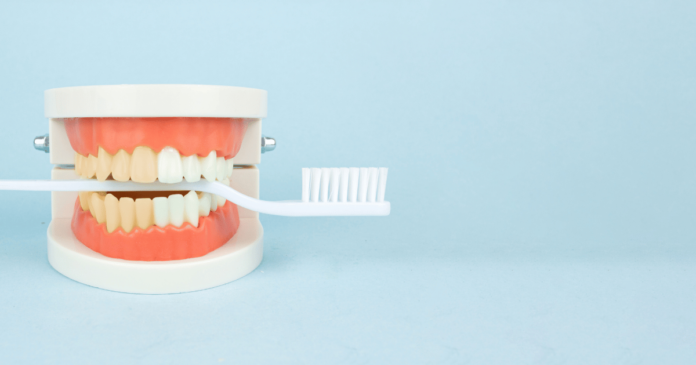Maintaining a radiant smile is not just about aesthetics; it plays a crucial role in overall oral health. One of the most effective procedures to ensure your teeth and gums remain healthy is deep cleaning. This comprehensive guide will explore everything you need to know about teeth deep cleaning, including the before and after effects, to help you make an informed decision.
What is Teeth Deep Cleaning?
Teeth Deep Cleaning Before and After, also known as scaling and root planing, is a dental procedure that removes plaque and tartar buildup from beneath the gumline. This procedure is essential for treating and preventing periodontal diseases. Unlike regular cleaning, which focuses on the visible surfaces of your teeth, deep cleaning goes beyond to address areas that are typically inaccessible.
Importance of Deep Cleaning
Deep cleaning is vital for maintaining optimal oral health. It helps in:
- Preventing gum diseases: By removing plaque and tartar, deep cleaning prevents the onset of gingivitis and periodontitis.
- Reducing bad breath: Accumulation of bacteria beneath the gums can cause halitosis. Deep cleaning helps eliminate this issue.
- Promoting healthier gums: By cleaning the roots of the teeth, deep cleaning encourages the gums to reattach to the teeth, reducing pockets where bacteria can thrive.
The Deep Cleaning Procedure
Initial Examination
Before the deep cleaning begins, your dentist will conduct a thorough examination of your mouth. This includes:
- Reviewing dental history: Understanding your dental history helps in identifying potential issues and tailoring the treatment.
- X-rays: These are taken to assess the extent of bone loss and tartar buildup beneath the gumline.
- Pocket depth measurement: The dentist will measure the depth of the gum pockets to determine the severity of the gum disease.
Scaling and Root Planing
The deep cleaning procedure itself is divided into two main parts:
Scaling
Scaling involves the removal of plaque and tartar from the surface of the teeth and beneath the gums. This is done using specialized dental tools such as ultrasonic scalers and manual instruments.
Root Planing
Root planing smooths the root surfaces, making it harder for plaque and tartar to reattach. This step is crucial for preventing further gum disease and promoting healing.
Aftercare and Follow-Up
Post-procedure care is vital to ensure the success of the deep cleaning. Your dentist will provide specific instructions, which may include:
- Antibacterial mouthwash: To prevent infection and promote healing.
- Pain management: Over-the-counter pain relievers may be recommended to alleviate discomfort.
- Regular follow-ups: Scheduled check-ups to monitor healing and prevent recurrence of gum disease.
Before and After: What to Expect
Before Deep Cleaning
Preparation: Prior to the procedure, it’s important to maintain a good oral hygiene routine. Brush and floss regularly to minimize plaque buildup. Your dentist may advise you to avoid certain foods and drinks that can stain your teeth or irritate your gums.
During the Procedure
Comfort Measures: The procedure is usually performed under local anesthesia to ensure comfort. Your dentist may also offer sedation options if you experience anxiety.
After Deep Cleaning
Immediate Effects: Post-procedure, you may experience mild discomfort and sensitivity. This is normal and typically subsides within a few days. Your gums may also appear slightly swollen or bleed lightly.
Long-Term Benefits:
- Healthier gums: One of the most noticeable effects is the improvement in gum health. The gums will start to reattach to the teeth, reducing pocket depth.
- Brighter smile: Removing plaque and tartar will make your teeth appear cleaner and whiter.
- Fresher breath: Eliminating bacteria beneath the gums will significantly improve your breath.
Risks and Considerations
While teeth deep cleaning is generally safe, there are some risks to be aware of:
- Sensitivity: You may experience increased tooth sensitivity to hot and cold temperatures.
- Gum recession: In some cases, gums may recede slightly, exposing more of the tooth.
- Infection: Though rare, there is a slight risk of infection. Following aftercare instructions carefully can mitigate this risk.
Maintaining Oral Health Post-Deep Cleaning
To ensure the long-term success of your deep cleaning, it’s crucial to maintain good oral hygiene practices:
- Brush twice daily: Use a fluoride toothpaste and a soft-bristled toothbrush.
- Floss regularly: Flossing helps remove plaque and food particles from between your teeth and under the gumline.
- Regular dental visits: Schedule regular check-ups and cleanings to monitor your oral health and prevent recurrence of gum disease.
- Healthy diet: Limit sugary and acidic foods that can contribute to plaque buildup.
Conclusion
Teeth Deep Cleaning Before and After is a powerful tool in maintaining and revitalizing your smile. By understanding the procedure, its benefits, and the necessary aftercare, you can make an informed decision to improve your oral health. Whether you’re looking to address existing gum issues or prevent future problems, deep cleaning can provide significant long-term benefits.


